BROKER RISK MANAGEMENT TIP
Broker Risk Management hosted a webinar with California Association of Realtors’ Chief Economist Jordan Levine on March 4, 2024. The following were questions with answers that were not addressed due to time constraints:
Question: Recently, I represented a buyer in a transaction. The buyer removed their property inspection contingency and was subsequently unable to obtain affordable insurance insuring the property. The buyer lost their deposit. How do I prevent this from occurring in the future?
Answer: In the future, when representing buyers ensure that you advise the buyers to investigate obtaining insurance as part of their inspection process. It is also recommended that buyers’ agents provide buyers with CAR’s Buyer’s Homeowner’s Insurance Advisory (“BHIA”).
Question: I am concerned that buyers do not necessarily want to be represented nor sign a buyer representation agreement. What can we do to get better at moving buyers past immediate gratification and thinking it is acceptable to work with an agent and sign the buyer representation agreement?
Answer: Buyers’ agents need to start preparing a presentation to buyers addressing agents’ values in working with buyers. For example, explain the extent of the work you intend to undertake on behalf of the buyer (i.e., search for appropriate properties, visit properties, assist in investigating the properties, assist in preparing and negotiating the contracts, assist with inspections, contingency removals and facilitate the close of escrow) and spend time with the buyers to understand their needs and wants. This presentation needs to be similar to a listing presentation when agents are attempting to obtain a listing. However, in this instance, agents are attempting to secure an agreement to represent the buyer through a buyer representation agreement. There are numerous webinars from CAR and local OARs which will be helpful in assisting agents in developing your own personal presentation content and style.
Question: Is there such a thing as self-insurance in home ownership?
Answer: Yes, so long as a loan is not involved. If a buyer is obtaining a loan secured against the property, a lender will always require insurance insuring the lender. If a property is being purchased with all cash, it is within the discretion of the buyer as to whether the buyer wants insurance. However, it is extremely risky to own property without insurance. See CAR from BHIA.
Question: I have buyers who are able to offer more to compete with top offers. However, it makes me nervous that the property will not appraise or that the buyers will assert a claim against me for advising them to offer above market. How do I handle this situation?
Answer: Ensure there is an appraisal contingency in your offer. Also, provide the buyer with a CAR’s Market Conditions Advisory (“MCA”) before writing the offer. Provide the MCA as a separate document to the buyer with an email advising the buyer to review and sign it before writing an offer.
Question: If a seller wants to wait to list, how do I handle the listing agreement?
Answer: A listing agreement must have a termination date. You cannot have a seller sign a listing agreement with an indefinite or undetermined date, as that is a Department of Real Estate license violation. However, you can agree to hold a property off the market for a limited period of time. Check with your local MLS for applicable rules.
UPCOMING WEBINAR: We received a number of requests for a deep dive into the buyer representation agreement. We will be providing that webinar on Monday, April 1, 2024, starting at 9:30 AM.
WEEKLY PRACTICE TIP: DO NOT FORWARD TO CLIENTS. This Weekly Practice Tip is an attorney-client privileged communication for the exclusive use of clients of Broker Risk Management and their agents. It may not be reproduced or distributed without the express written consent of Broker Risk Management LLP. The advice and recommendations contained herein are not necessarily indicative of standards of care in the industry, but rather are intended to suggest good risk management practices.
